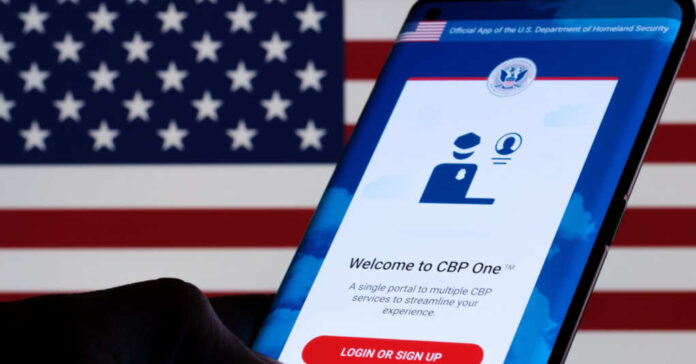
In late October 2020, the U.S. Customs and Border Patrol announced the release of CBP One, an app that streamlined a variety of services into one handy portal. In January 2023, the app was updated to include appointment scheduling for migrants seeking lawful entry into the United States.
Since the update, an estimated 170,000 migrants have scheduled appointments, and on July 1, CBP announced an expansion of appointment availability to 1,450 per day. The app allows immigrants to schedule appointments up to two weeks out, meaning they can schedule the appointment as they begin the journey to keep it.
But powerful cartels and corrupt politicians are taking full advantage of the app’s incentivization for illegal immigrants to make the long and perilous journey to the border.
In June, the government temporarily closed entry for Laredo, Texas CBP appointments because officials in Mexico held migrants hostage and blocked their scheduled entry until they could pay for their release. In another instance, asylum seekers were preyed upon by cartels and human smugglers in a makeshift camp they set up while awaiting their scheduled appointments.
Another incident saw fifteen migrants on a bus kidnapped and held for ransom as they approached the Texas border city of McAllen. The kidnappers used the promise of help in using CBP One, then took the migrants by force to a hotel room with other kidnapped migrants. Some of the migrants reported being held for several months.
Cartels in Mexico intercepted migrants from legitimate ports of entry and redirected them to illegal crossings, promising that the migrants were going to “get in anyway and remain in America.” This is done to distract border patrol agents so drug smugglers have greater freedom elsewhere along the border.
Meanwhile, many immigrants are using a loophole in the app to jump in front of others who are waiting for their scheduled appointments. Per the app, if “language barriers, illiteracy or technical issues” hinder a migrant’s ability to use the platform, they are permitted to appear in person at a port of entry and simply request an interview.
One immigrant claimed in a recent interview, “I tried many times to set up an interview on the app, but it never worked.” He went on to add that the loophole was his “trump card.”
Immigrants seeking to use CBP One but unable to do so are prime targets for cartels. Once in the clutches of the cartels, however, the future of these “asylum” seekers is anything but certain. Cartels can charge more than $200 per person to “aid” with crossing the border, and those who cannot pay are subject to kidnapping, selling drugs, and rape.
One shelter volunteer near a Texas border city reported that cartels would cut off an immigrant’s ears or fingers if they were unable to pay a ransom. In 2022, the Mexican government claimed to have rescued more than two thousand migrants who were kidnapped by gangs.
The app lures migrants to the border by promising to make applying for asylum a straightforward process, but for many attempting to use the platform, it’s anything but easy.
Issues with the app include flawed facial recognition technologies, which are often incapable of recognizing people of dark complexion. Language barriers and a lack of a Wi-Fi connection plague users as well, and the app cannot keep up with the number of immigrants seeking asylum. Additionally, not every immigrant has a smartphone. Still, others may be completely unfamiliar with how an app works or how to use it.
In addition, many have compared appointment scheduling to buying concert tickets to see a popular artist. Since the app limits how many migrants receive appointments each day, migrants begin trying to log on at 4 and 5 am in the morning, causing the system to crash. Glitches and bugs plague the app.
Litigation and policy director of Al Otro Lado, Erika Pinheiro, criticizes, “We are supposed to be helping the most vulnerable people, not just those who can speak English or Spanish and are technologically savvy enough to fill out an app.”
The only alternative for immigrants who can’t use the app is to wait it out in makeshift encampments until they can find someone to help them use CBP One and successfully schedule their appointments. Then, they must wait for their scheduled appointment date, sometimes weeks away.
Immigrants caught in an endless holding pattern at the border can rest easy, however. Cartels and human traffickers can “help” them navigate the troublesome app for a price.
The CBP app is one of those ideas that “seemed like a good idea at the time,” but it lures even more illegals to the border by promising easy access of entry.
Unfortunately, thanks to cartels, many immigrants have discovered this is one show that is not worth the price of admission.











